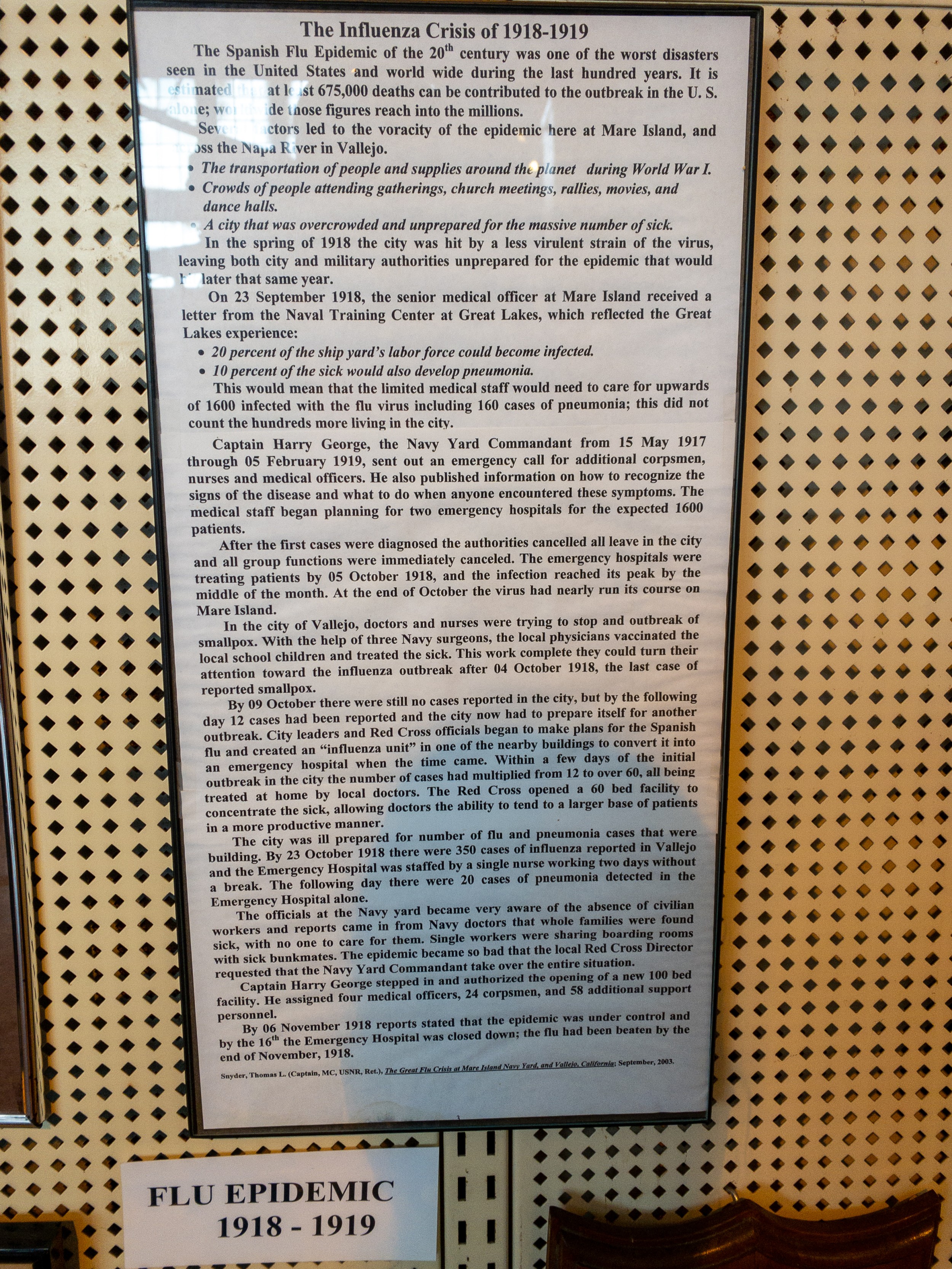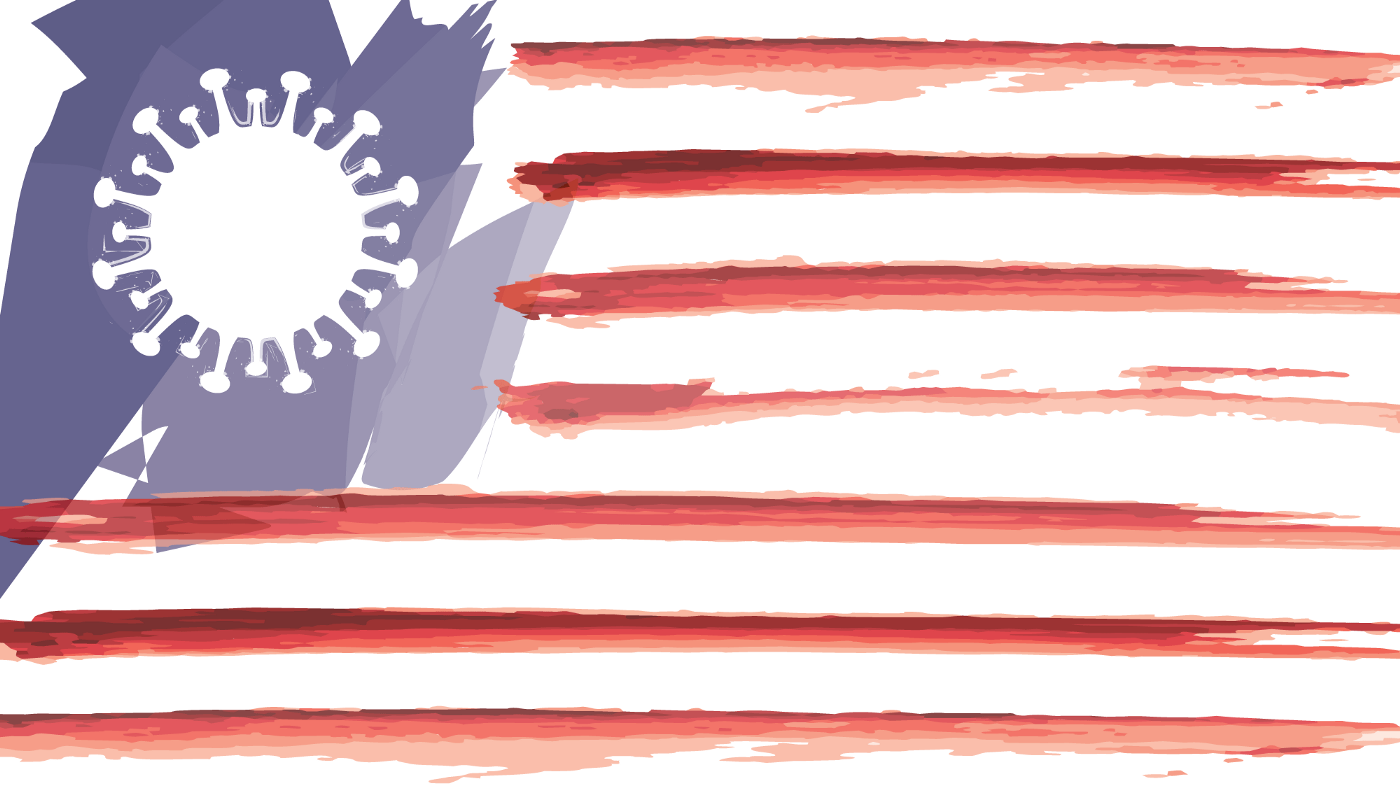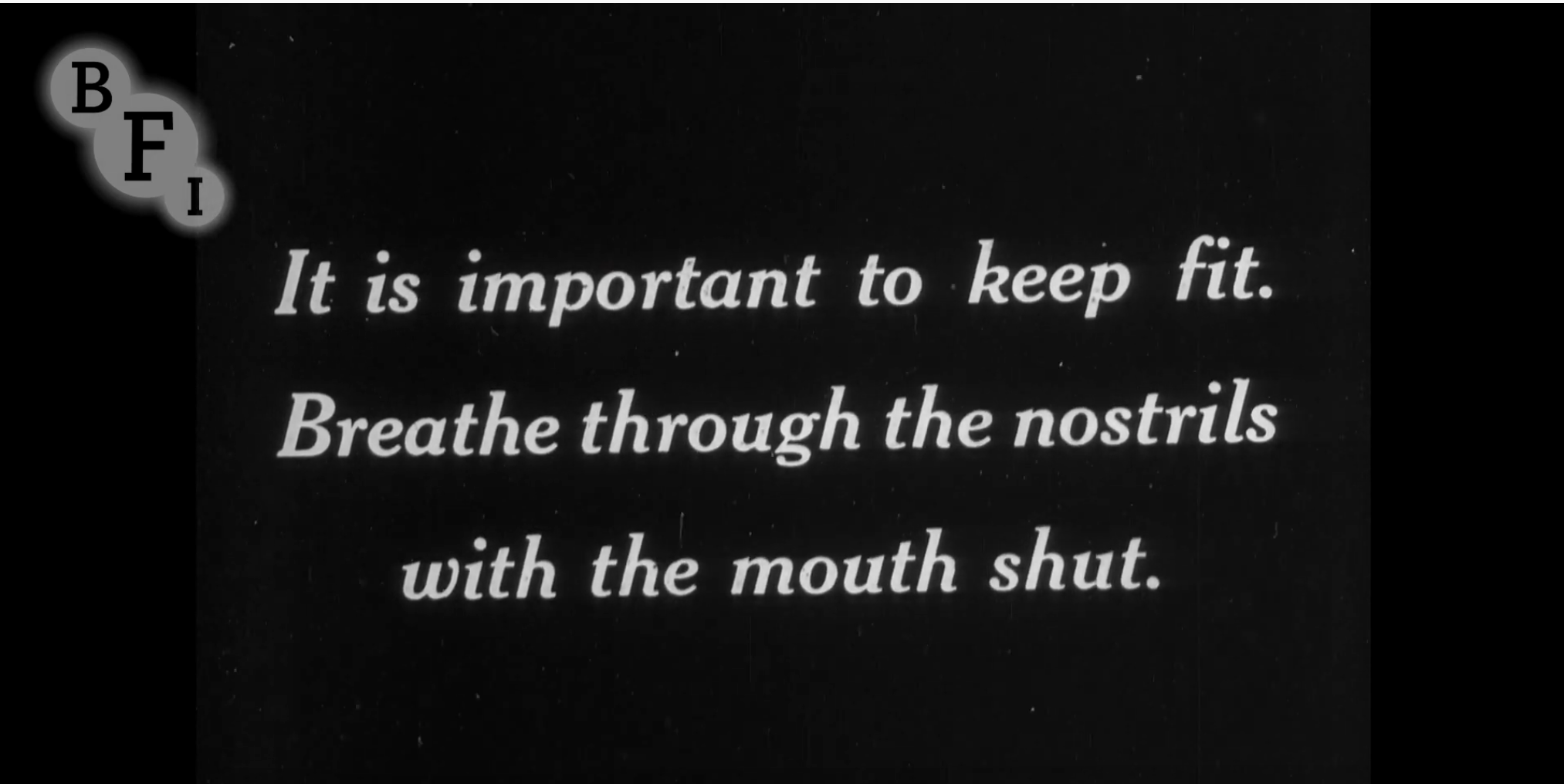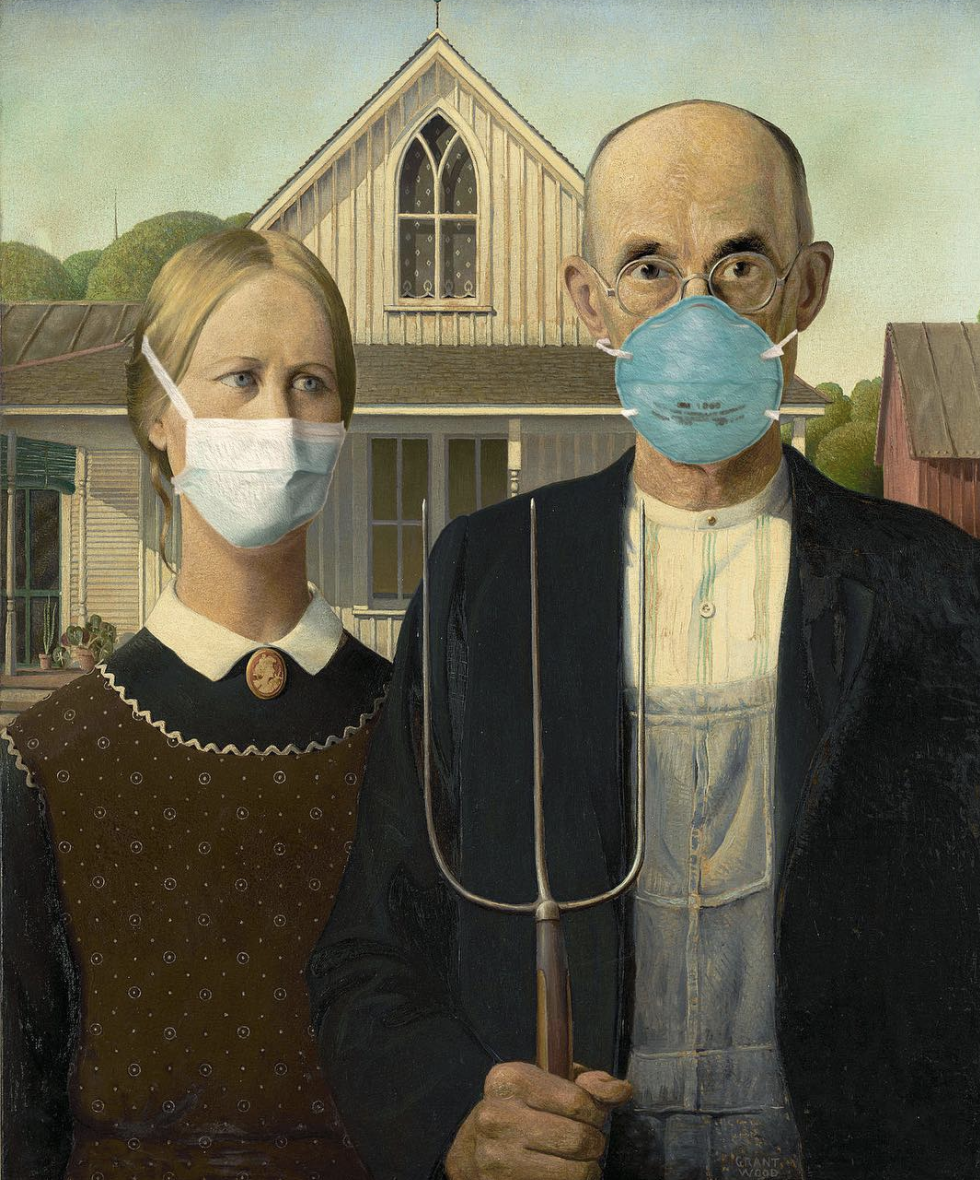Masks and Breath

Quick History
At the Mare Island Naval Shipyard, there is a small exhibit on the ravages of the 1918-1919 Influenza Pandemic. On the last visit weeks before the COVID-19 lockdowns were enacted, I read it with a passing interest then. For all the progress, advancements, and improvements we've made over the past 100 years, it seems human attitudes and behaviors are not one. As an aside, if you're in the Bay Area and are a fan of military history, do check out Mare Island Museum. It's open limited hours, as is the chapel tour, but worth it.

The first part is that the flu wasn't Spanish. The Spanish called it the "French Flu". It likely started in Kansas and spread globally. The Plague States of America rise again a century later. People denied it was a problem. People refused to wear masks. People protested all the above on both sides of the mask orders.

Here's a British Film from 1919 on proper, safe etiquette and behavior during the pandemic.
One of the first things you've noticed about wearing a mask is breathing. One suddenly becomes aware of every breath, the fog of your glasses, and the just how much air gets around many masks. Wear it too tight and your ears hurt. Too loose and you feel vulnerable.
Wear the Mask
As previously stated, I traveled through China, Philippines, Hong Kong, South Korea, Japan, more generally Asia, during past pandemics. Masks were everywhere. It quickly became the norm to wear one in public. The woman who ran the corner stand around from my hotel scolded me one morning because my mask wasn't tight enough. In discussion through broken English and my very broken Korean, she said I'm more of a danger to her than the reverse. My logic was that she interacts with hundreds of people a day, so the mask protects me from her. Her's was the opposite, that the mask protects the world from you. Both beliefs are correct.
Either way, you wear the mask. Peer pressure is a pretty effective motivator at times like this. Secondary is the fact that I already stand out in a sea of Asians. Now you have to reckon with breathing in the mask. It's easy when walking around or doing daily tasks. It's more of a challenge when you're out riding bikes or exercising. You're suddenly very aware of how much air you are not getting during strenuous exercise. Over lunch one day, I asked a coworker how he handles his daily exercise routine with the mask. He's former career military (versus the few years of compulsory service) and had a fairly strict exercise routine. His response was pretty classic, "why do you breathe so much?"
I didn't understand it. I played football (soccer) and learned karate since I was very young and at the time of this trip to Korea, I was racing motorcycles. By all measures, I was pretty fit and figured I knew how to breathe just fine. Turns out, for all the training and instruction I received over my lifetime, breath training wasn't one.

Screen shot from Dr. Wise on Influenza (1919), BFI National Archive
Fast forward to a few months ago. I read the book Breath by James Nestor. It makes fascinating a mundane topic. "Trust, but verify" is built into my DNA it seems, so I chased down most of the references in this book. The hypothesis is the author incorrectly interpreted the source material. I verified as many as possible to test my hypothesis. Turns out, the data generally supports the conclusions.
Learning to Breathe
People in the Indus Valley figured out breath and wrote it down in 200 BCE. Prāṇāyāma is that practice. Or maybe the Tibetan Monks figured it out with གཏུམ་མོ (Tummo) Wim Hof has taken these practices and removed the religious aspects from them. Freedivers learn about breath, too. The fact remains that normal people can do these feats, and do it with nothing but purpose and breathing.
There is so much here, I decided to start at a baseline. How often do I breathe through my mouth? Normally? During exercise? What are the alternatives? How do you even measure this?
You can buy a spirometer to measure the volume of air during inhale and exhale. The simplest measure is to merely close your mouth and take notice of when you want to open it to breathe. Also, I read about elite athletes and their breath training regiments.
After a week of tracking my desire to mouth breathe, it is far more often than I expected. Elite athletes don't breath through their mouth until absolutely necessary. Successful professional cyclists and track athletes learn to control their breath throughout the competition. How do they learn to do this? They practice breathing and some tape their mouth shut. Most of these techniques have their origin in either Tummo or Pranayama breathing.

In order to retrain my body to breathe through the nose always, until I absolutely need more volume through the mouth, I went right for the extreme: tape the mouth shut. The first time you do it, it's a freaky feeling. I once took an urban survival course and silly me volunteered to be the hostage for one of the exercises. They tape your mouth shut and tie you to a chair and place you facing a wall in a dark room. So many levels of panic set in, even though you know it is an exercise. Taping your mouth shut and then going about your normal routine sort of feels like that panic. The bonus is, when wearing a mask, no one knows--until you try to speak. Your body manages to adjust quickly.
Here's the next baseline, the apnea walk. It's a technique promoted in free diving. There's the starter method and the full method. The starter is to take a few deep breaths and then finally one last breath out. Start a timer. How long you can hold until the next breath? Very quickly you can improve from 10 seconds to 30 seconds. The full method is to do the same, but start walking and count steps. My starting baseline was 11 seconds for static apnea. My walking apnea baseline is 15 steps.
Riding a bike is a different experience, especially going up Hawk Hill. I can make it far further than I expected with controlled breathing through my nose, while wearing the mask. It sounds insane--and maybe it is-- yet, it works.
Of course, I keep wondering what am I really improving? Are these feats anything beyond entertaining parlor tricks? The ability to free dive would be pretty nice. The ability to keep my mind better focused when I was racing motorcycles and formula cars would have been nice. Beyond all of these active measures of progress, there's the passive ones. Since focusing on my breath, my "sleep score" has significantly improved. The score is consistent and I get noticeably more deep sleep. The sleep score and deep sleep duration are independent of total hours of sleep. Whether it is 4 hours or 8 hours of sleep, my sleep score and duration of deep sleep are now pretty consistent. Another passive measure is resting heart rate. It's already pretty low. While not a significant change, the average has dropped by 2 bpm since starting all of this. A completely unexpected subjective measure is even the peak of allergy season, I can breathe through my nose without issue.
Measurements continue.
